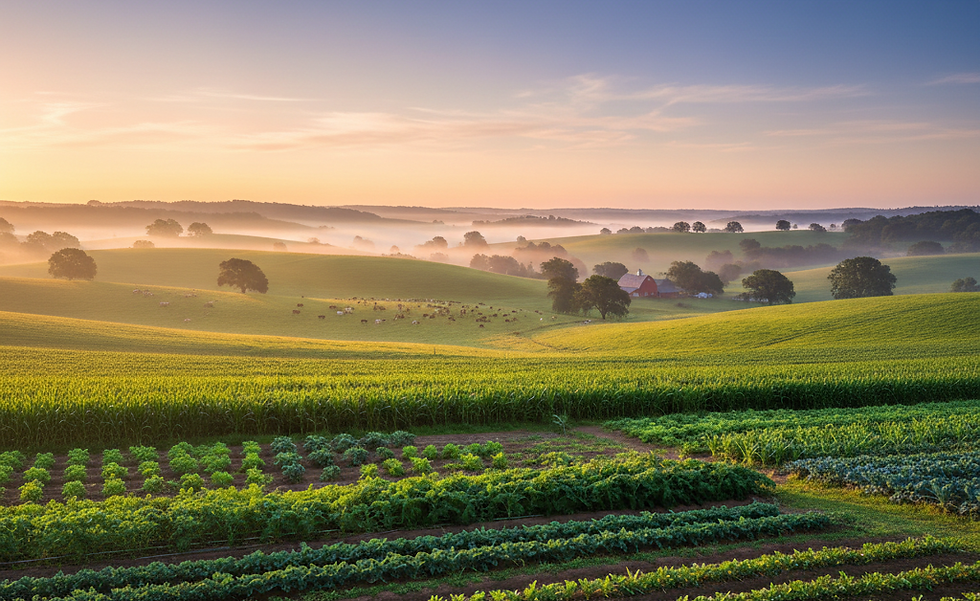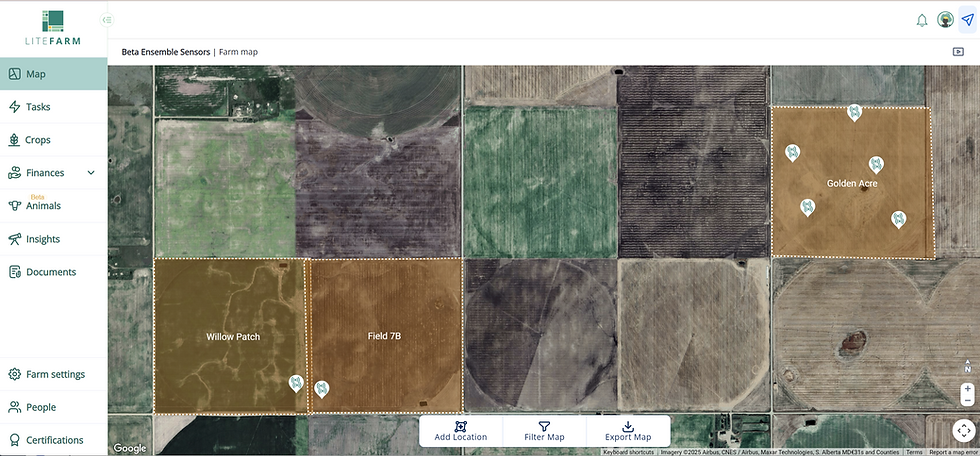How can LiteFarm support agroecological farmers?
- Larisse Cavalcante
- Aug 21, 2024
- 3 min read
In a previous article we discussed how crop diversification and the avoidance of agrochemicals are fundamental to agroecology. However, transitioning from conventional monoculture-based food systems to agroecological practices presents several challenges across technological, commercial, and legal domains. To list just a few: there's a noticeable shortage of machinery tailored for diversified operations; lack of direct sales avenues such as farmers' markets and Community Supported Agriculture (CSA); and hurdles in accessing rural credit. These challenges extend into the realm of digital technologies as well. LiteFarm aims to address these digital barriers — which will be discussed throughout this text — offering solutions to support the advancement of agroecology.

Agroecological farmer tending to his agroforestry in Southern Brazil.
LiteFarm, a farm management application hosted by the Centre for Sustainable Food Systems (CSFS) at The University of British Columbia (UBC) in Canada facilitates detailed crop tracking, including planting areas and harvest data. These features are crucial for managing biodiversity, optimizing resource efficiency, and tailoring sustainable practices to local conditions. LiteFarm helps in assessing the effectiveness of various agroecological practices, such as crop rotation and the use of organic inputs, which are vital for improving soil health, enhancing ecosystem resilience, and ensuring economic sustainability. The 'Insights' section further supports decision-making by providing data on economic, social, and environmental sustainability aspects. By offering these tailored tools, LiteFarm aids agroecological farmers in navigating the complexities of sustainable farming, ensuring their efforts are both productive and regenerative.
Dr. Hannah Wittman, a researcher and professor at both the Faculty of Land and Food Systems and the Institute for Resources, Environment and Sustainability at UBC, emphasizes: "Very few of the agroecological assessment tools currently available are accessible to farmers to use autonomously, since they are costly, time-consuming and not user-friendly, and many also present challenges to data sovereignty. We saw that there was a need for a farmer-driven tool to document the multidimensional outcomes of agroecology."
Agroecological farmers also often encounter difficulties when seeking organic certification, a process that can be pursued through third-party certifiers or a Participatory Guarantee System (PGS) — a subject we have explored in a previous article. Regardless of the chosen certification route or the country, the certification process is generally demanding, requiring meticulous organization of farm data. This complexity can be compounded for agroecological farmers who typically cultivate a wide range of crops in smaller areas. LiteFarm significantly eases this challenge by making crucial information, like details about crops and inputs, easily accessible and shareable, thus simplifying the certification journey. Additionally, LiteFarm has established partnerships with specific certifiers, offering tailored questionnaires to users to further facilitate their certification needs.

LiteFarm’s Farmer Success Lead, David Trapp, using the app in the field with farmers in Mexico.
Besides supporting agroecological farmers, the platform can also be used to support agroecology research. Results from these research are used to inform agroecological best-practices and supportive government policies. One example of research being carried out in partnership with LiteFarm is the "Agroecology in Latin America: building pathways" project, which we will share more about shortly. We have also previously written about research using LiteFarm to analyse constraints on agricultural diversification.
As we state in our data policy, data can be used anonymously for pre-approved research proposals, but users will always maintain sovereignty over their data. "Most current farm management tools use data for profit. With LiteFarm, we intend to help farmers capture (some of) the benefits of the digital agricultural revolution without ceding data sovereignty," Hannah states.
LiteFarm was not only designed for farmers, but also by them. We have built the platform with input and feedback from agroecological farmers from around the world. The possibility to draw natural areas on the farm map and the ability to indicate non-monetary types of harvest uses are both examples of some features developed based on feedback from agroecological farmers. Currently, the app database contains nearly 400 different crops, many of which were added from suggestions from diversified farmers from around the world. Additionally, any user can nominate a crop to be added to the LiteFarm crop catalog. Before being added to the catalog, the nominated crops undergo a curation process which includes a review by agronomists and researchers.

Farmers tending to a diversified garden in El Salvador.
LiteFarm takes pride in supporting agroecology in so many ways! And to best represent agroecological systems, we are currently working to build an animal component. Reach out if you would like to contribute to our work. And don’t forget to stay tuned for future press releases: we will explore some results and updates on how LiteFarm has been supporting agroecology across Latin America.
As always, happy farming!
The LiteFarm team



Comments